11 Common Lemon Tree Pests: Identification Pictures + Control
Lemon trees are prone to pest attacks that range from insects, rodents, bugs, larvae, and gastropods. Pests typically attack the tree’s leaves, fruit, twigs, and stems. Extensive damage can cause stunted growth, leaf fall, and even some citrus tree diseases.
Identifying potential pest incursions early is crucial for effectively controlling them from spreading.
Contents:
11 common lemon tree pests
Here are the most common pests on lemon trees:
1. Aphids

Aphids are small insects that can cause damage to your lemon trees. Aphids attach themselves to leaves, twigs, and other soft tissues where they suck sap from the plant’s phloem.
You can tell if your lemon tree has an aphid infestation by manually inspecting it for insects using a magnifying glass. A sticky goo, also called honeydew, on the plant’s leaves and fruit can also indicate a recent infestation on your lemon trees.
Signs of an aphid infestation on your lemon trees include:
- Curling leaves on lemon trees
- Yellowing citrus leaves
- Slowed plant growth
- Stunted and drying shoots
- The presence of soot mold on leaves and fruits
- Sticky substance on the leaves
You can use organic, biological, and chemical control measures to get rid of aphids on your lemon trees. I use Neem oil or a solution of garlic + pepper + vinegar to control these pests.
Here’s a homemade aphid spray recipe for your lemon trees.
- 1 oz of water
- A clove of garlic (15 pieces)
- 1 tablespoon cayenne pepper
- 1 tablespoon vinegar
Slightly crush garlic and add it to a pot with water, cayenne pepper, and vinegar. Boil for about 15 minutes, then cool and strain. Add the solution to a spray bottle with 10ml liquid soap. Spray the infested lemon trees to kill the aphids and their eggs for good.
2. Citrus leaf miner

The citrus leaf miner (Phyllocnistis citrella Stainton) is a small, winged insect that lays eggs on the underside of your lemon tree leaves. Once the eggs hatch, the larvae burrow inside the leaf as they feed on the soft tissue inside the plant.
You can tell if your lemon tree is suffering from a citrus leaf miner attach by checking for small silver-like coloring within the leaf veins. You can also insect your plant’s leaves for the presence of eggs on affected surfaces.
Key indicators of citrus leaf miner infestation include:
- Malformed leaves
- Stunted growth
- Reduced fruit size
- Evidence of tiny brown moths on lemon trees
Chemical sprays and biological predation are effective ways to safeguard against citrus leaf miners. I recommend products that contain imidacloprid for treating and controlling these insects on your citrus trees.
A good product I have used for my citrus trees is the BioAdvanced Fruit, Citrus, and Vegetable Insect Control.
3. Citrus rust mite

The citrus rust mite “silver mite” (Phyllocoptruta oleivora) is a common pest affecting lemon trees growing in humid conditions.
The pest affects mature trees and causes damage to leaves, twigs, and fruits. You can identify citrus rust mites by inspecting sections of your plant using specialized equipment.
Adult citrus rust mites appear as small yellow-colored specks with an average size of about 0.15mm.
Signs of citrus rust mite infestations include the following:
- Considerable fruit damage
- Presence of small egg clusters in leaf depressions and cracks
- Reduced fruit yield
It’s crucial to deal with citrus rust mite infestations early because the pests can spread quickly to other trees, making them difficult to control effectively.
Natural control measures such as introducing predatory mites and pesticides can effectively deal with rust mites.
4. Lemon bud moth
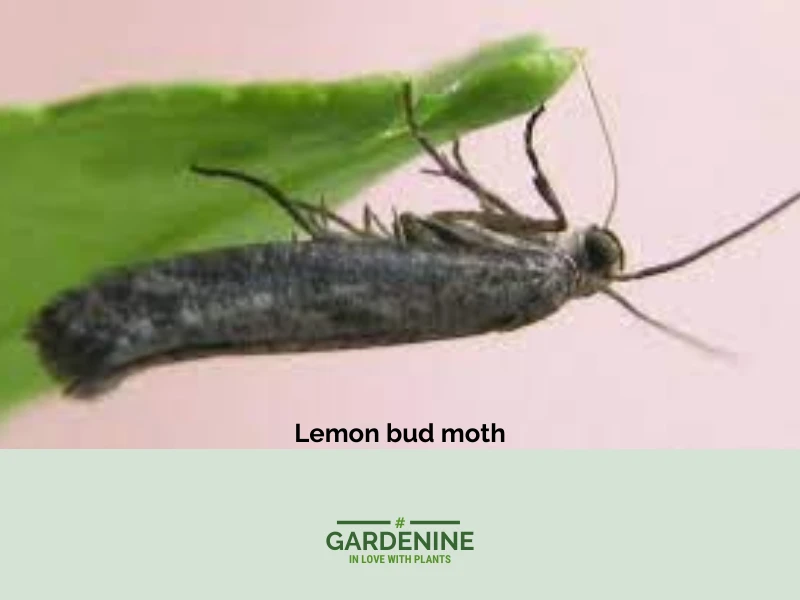
The lemon bud moth (Prays citri) is an average-sized brown insect that attacks lemon trees when blossoming.
Adult moths lay eggs on young flowers and fruit to produce larvae that feed on the affected sections. Lemon bud moth larvae also feed on the tree’s leaves (and other soft tissue) where they cause extensive damage to blossoming plants.
Key indicators of lemon bud moth infestations include:
- Internal and external damage to lemon fruits
- External damage to lemon tree leaves and flowers
Control measures for bud moths include chemical insecticides and pheromonal sprays. Spraying chlorpyriphos-rich insecticides is an effective deterrent against such pests.
5. Mediterranean fruit fly
The Mediterranean fruit fly (Ceratitis capitata) is a small brown-yellow winged pest that affects lemon trees by feeding on the tree’s fruits.
Female fruit flies attack mature fruit before ripening. They burrow small holes into the fruit and lay several egg clusters. On maturity, the larva starts to eat the fruits causing extensive damage.
Signs of Mediterranean fruit fly infestations include:
- The presence of adult flies around ripening fruit
- The appearance of small black larvae from affected fruits
- Low fruit yield
Dealing with Mediterranean fruit flies involves destroying their breeding grounds, decaying fruit, long grasses, and using insecticides to eradicate adult populations.
6. Crusader bugs
Crusader bugs (Mictis profana) are large brown insects with a conspicuous “X” on their backs. The bugs feed on young lemon tree shoots where they extract sap from the plant’s soft tissues.
Crusader bugs are easy to identify owing to their large size and conspicuous features. The insects also secret a strong unpleasant smell when disturbed as a deterrence from predators.
Indicators of a crusader bug infestation include:
- Wilting shoots and flowers
- Secretion of sap through holes left on the plant after the insects feed
- Yellow-white blotches on leaves
- Deformed fruits and leaves
- Citrus leaves fall off in some cases.
Effective control measures include handpicking, chemical control, and predation. Birds and spiders regularly feed on the insects while insecticides prove useful when dealing with large-scale infestations.
7. Citrus gall wasp
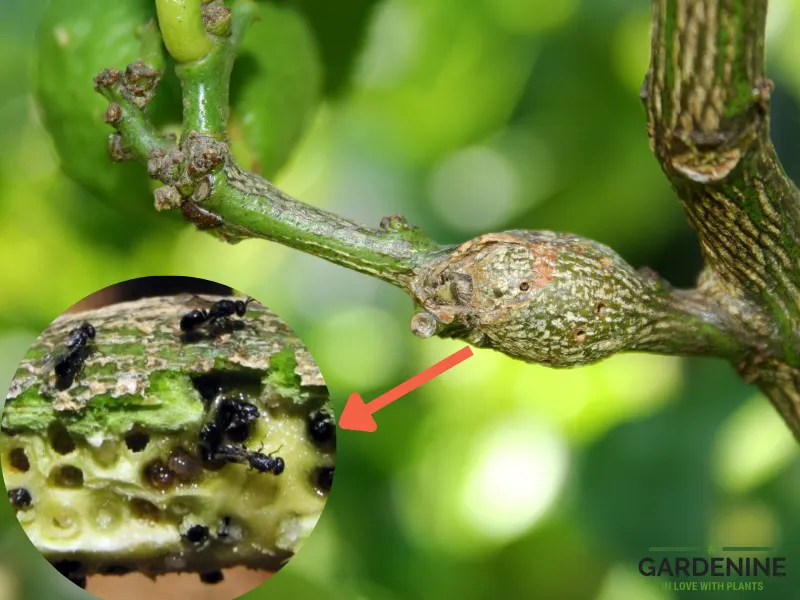
The citrus gall wasp (Bruchophagus fellis) is a notorious black/brown pest that attacks lemon tree stems and twigs.
The insect causes swellings (galls) to appear on affected plants, leaving them vulnerable to breaking and diebacks.
Adult citrus gall wasps measure about 3mm or less in size, making them difficult to see. The wasps lay eggs in the galls, which then hatch in spring to produce numerous young insects.
Here are the signs of citrus gall wasp on citrus trees:
- Swellings on young twigs and stems.
- The emergence of small black insects during spring.
- Branch/ twig diebacks.
- Reduced growing vigor.
Gall wasps have a limited flying range, making them easy to control. However, large-scale infestations require a collective effort by community members.
The best organic treatment for citrus gall wasps is to cut off the affected branches, then seal the swellings with plastic bags and put them in the sun to bake the wasps until they die.
8. Citrus scale
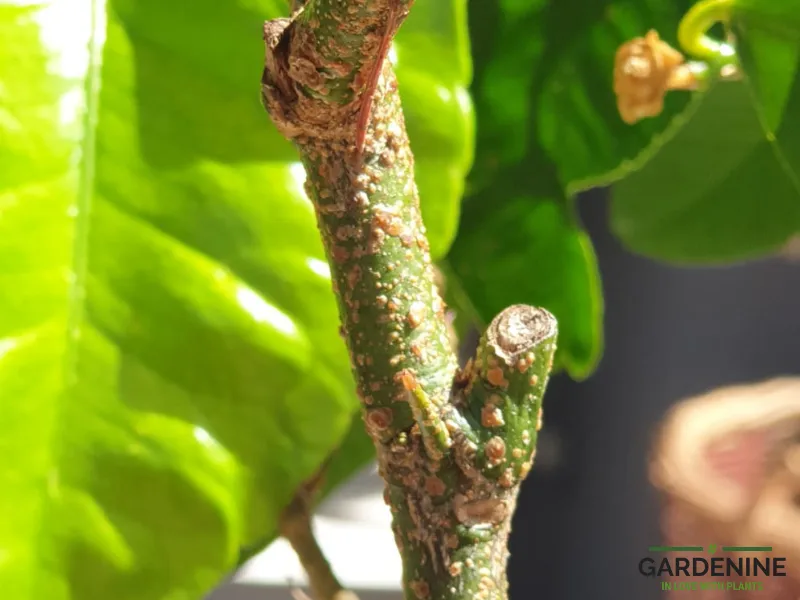
Scales (Coccomorpha) are small insects that suck plant sap to cause tissue damage to affected sections of your citrus tree. The insects exhibit a wax-like covering that protects their soft tissue from the elements and predation.
Scales have different physical variations that can be challenging to distinguish from other sap-sucking insects.
However, unlike aphids, they become immobile when feeding, an aspect that makes it easy to control them.
Key signs of a scale infestation include:
- Wilting leaves
- Premature leaf drop
- Presence of wax-like clusters on the underside of leaves
- Blemishes on fruits and twigs
Effective scale control strategies include a combination of cultural practices, biological measures, and chemical treatments. Regular pruning can help control scale infestations by improving airflow and sunlight exposure.
You can simply apply a neem oil solution on lemon trees to kill scale, mealybugs, and other pesky pests on your citrus trees. This treatment, however, is best applied on indoor trees.
9. Mealybugs
Mealybugs (Pseudococcidae) are small-bodied insects that feed on plant sap. The insects appear as small white specks on leaves, twigs, and other soft tissues.
Adult insects measure between 1.2 mm and 5 mm in size. Mealybugs cause damage to plant tissues by puncturing small holes in sensitive parts of your lemon tree.
High mealybug populations can be detrimental to your lemon tree as they leave the plant vulnerable to fungal and bacterial infections.
Signs of mealybug infestations include:
- Stunted growth
- Yellowing leaves
- Premature fruit and leaf drop
- Evidence of sooty mold
Control: Mealybugs are vulnerable to predation from ladybugs, hoverflies, and ants. If you have a citrus garden, introduce ladybugs to predate on them and reduce their populations.
Alternatively, spray rubbing alcohol on the insects to get rid of mealybugs on indoor citrus trees.
10. Rats (rodents)
Rats are formidable pests that can easily damage lemon tree fruits, twigs, and leaves. The rodents occasionally gnaw on the tree’s bark causing extensive tissue damage to sensitive sections of your tree.
You can tell if your lemon tree is suffering from rats and other rodent attacks by checking for bite marks on fruits, twigs, and stems. Rodent populations can explode if left unchecked, especially when growing lemon trees in an outdoor setting
Key indicators of rat infestations include:
- Evidence of bite marks on stems, fruits, and twigs
- The presence of rat droppings on leaves or at the base of the plant
- Physical presence of rats within the vicinity of your lemon tree
Dealing with a large-scale rodent infestation can be challenging. However, you can opt for biological control measures, traps, and bait to keep their populations in check.
11. Snails and slugs
Snails and slugs might attack lemon trees, where they feed on young shoots, ripening fruit, and young tree bark. Brown snails (Cornu aspersum) are a highly widespread species that cause damage to lemon trees.
You can tell if your citrus tree is under snail attacks by checking for signs of chewing on the leaves, twigs, and fruits. Snails also leave a slime trail which makes them easy to spot.
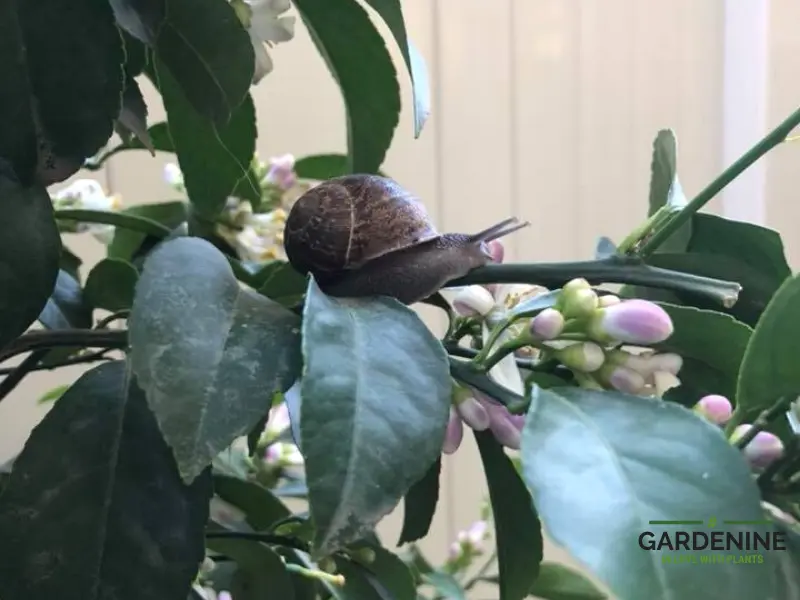
Key signs of snail infestations on lemon trees include:
- Presence of several snails within a lemon tree
- Circular bitemarks on leaf margins
- Several slime trails on lemon tree leaves and fruits
You can use several control measures when dealing with a snake infestation. One method involves physically picking up the snails and moving them away from our trees. Snails are also vulnerable to predation; birds, snakes, and other predators regularly feed on the pests.
You can also use a combination of chemical deterrents and cultural practices to keep their numbers in check.
CONCLUSION
I’ve used Neem, and it has controlled most of the insect problems on my lemon trees. I probably have about 20 citrus trees that I’ve grown from seedlings to 7ft tall, and all are healthy because I do routine neem oil sprays.
Until I had about 10 trees, the only bad bug I saw were spider mites. I’ve noticed over the years that the more trees you have, the more bugs you will have. Be very vigilant when buying or bringing home new plants. Some I’ve gotten were infested with bad bugs, so it is a good idea always to quarantine new lemon trees first.
READ NEXT: RECOMMENDED CITRUS FERTILIZERS
References


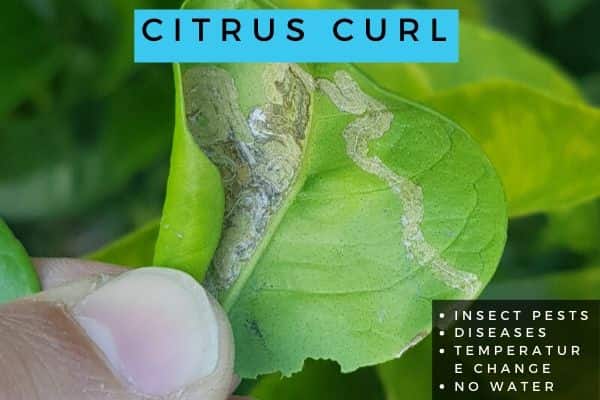


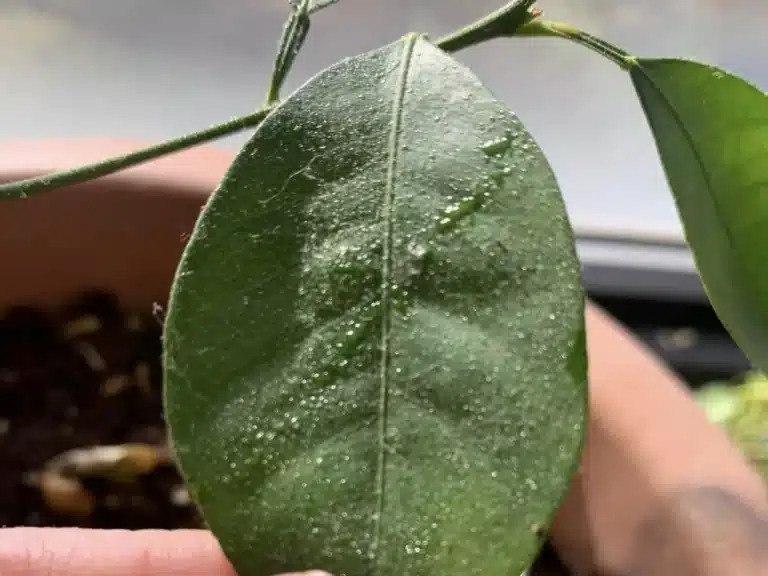
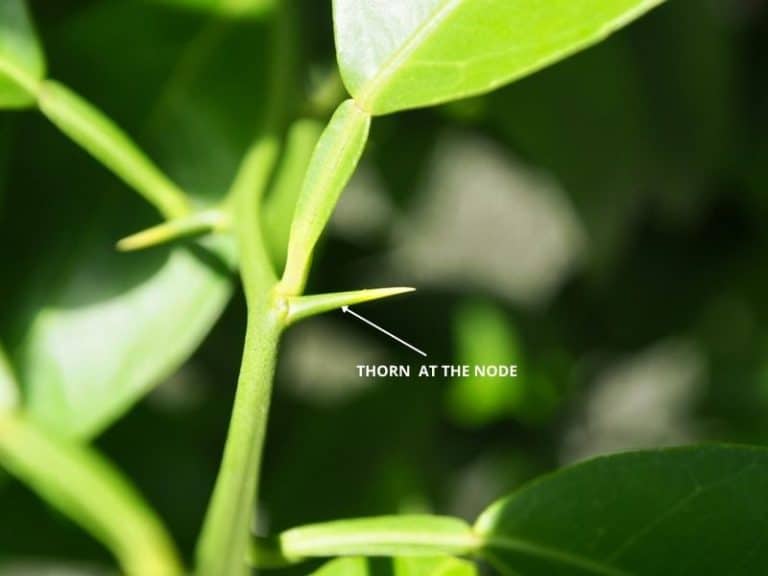
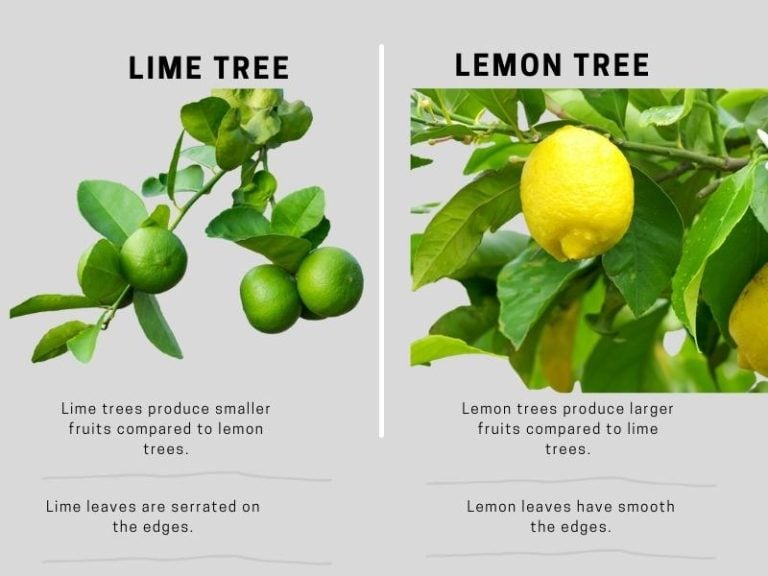
Hi, thanks for this article. I just bought a baby Meyer lemon tree plant and I am acclimating it to the sun outside before placing it in its container to grow. It will reside on my deck and not in the ground. I’m reading about these pests and wondering about overWintering inside.
I live in Zone 7, too cold to overWinter outside and the grower states that I can move the container indoors and use a grow light to keep the tree happy until next Spring.
What if my tree has these pests, am I bringing them inside to grow and spread? How should I treat the tree before bringing it inside?
Hi Vickilynn,
I’m glad you asked. Bringing plants indoors for the winter does risk introducing pests to your home. However, I recommend taking steps to prevent this with your Meyer lemon tree.
First, thoroughly inspect the plant, leaves, stems and soil for any signs of insects, eggs, or webbing. Use a magnifying glass if needed because some pests can be so tiny at an early stage. Pay extra attention to the underside of leaves and where stems meet branches.
If you see any evidence of pests, isolate the plant and treat it with insecticidal soap or neem oil before bringing it inside. Be sure to spray all surfaces, including the underside of leaves where most pests hide.
Even if you don’t see pests, I recommend giving the tree a preventative treatment since they can hide. Neem oil is a great organic option that will help deter a wide variety of potential pests.
After treatment, keep the tree isolated for at least a week to ensure any remaining bugs die off. Only bring it indoors if you’re confident the pests have been eliminated.
Once inside, keep a close eye on the tree for any signs of insects emerging. Be prepared to treat again if needed.
Don’t hesitate to reach out if you have any other questions.
I’m getting holes on my leaves almost looks like an insect is eating the leaves but nothing is visible
Holes in the leaves of your lemon tree can be caused by a number of different pests. To be sure of what you’re dealing with, please email me photos to alex@gardenine.com
Meanwhile, here are some tips to identify and treat the culprit:
Carefully inspect the undersides of leaves and along the stems for any visible insects. Use a magnifying glass if needed. Common culprits include caterpillars, aphids, leaf miners, and thrips.
Another possibility is that snails or slugs are feeding on the leaves overnight. Look for their telltale slime trails in the morning.
If you don’t find any visible pests, the holes may be caused by citrus leaf miners. The larvae bore inside the leaves and create meandering tunnels. Look closely for silvery trails or swollen areas on leaves.
For any insects found, use insecticidal soap, neem oil, or horticultural oils to treat the tree. Be sure to spray the undersides of leaves.
I just brought my meyer lemon tree in for the cold weather and I have tiny white balls appearing on the plant. My tree is 3 years old and don’t remember this happening before. I live in Rhode Island. Can you give me a bit of help with this issue?
It sounds like your Meyer lemon tree is infested with mealybugs while it was outside. Mealybugs are small, soft-bodied insects that feed on plant sap. They produce a cottony, waxy substance that appears as tiny white balls on the stems and leaves.
The good news is mealybugs can be treated, especially since you caught it early after bringing your tree indoors. Here’s what I recommend:
Quarantine the plant away from any other houseplants to prevent spread.
Use a cotton swab dipped in alcohol to manually remove the mealybugs. Be sure to get into crevices on stems.
Follow up with a spray of insecticidal soap or neem oil to kill any remaining bugs. Spray all leaf surfaces, stems, and the soil.
This should help.